B&W Intl Bike Box II
Over the years I’ve owned and used a lot of bike cases. I own a lot of them now. It’s just a function of how long I’ve been doing this. I’ve owned a lot of soft cases but I’ve gravitated toward hard shell cases because of the protection offered and because most of the airline rules today say that a hard shell case is required to keep the airline from tagging the item as “fragile.”
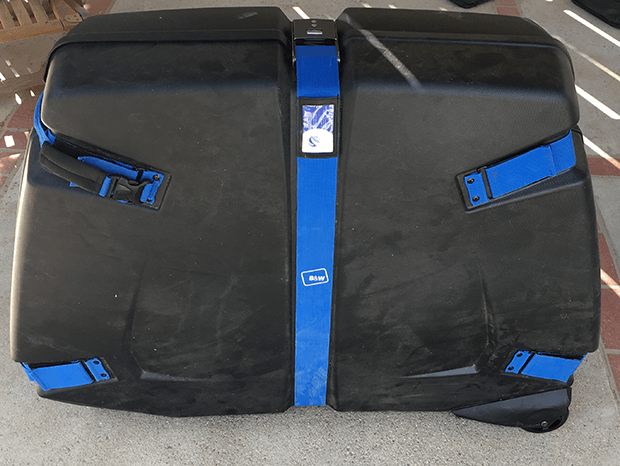
According to B&W, this isn’t the case I should be showing you all. This one, the Bike Box II, is its best selling model. But it’s not what triathletes buy. Because B&W is a German company and has a close relationship with Canyon, I suspect its opinions are somewhat colored by Canyon’s exhortation against not removing the pursuit bar on its Speedmax SLX (the shipping of which is discussed in this Reader Forum thread). But I wrote B&W back with pictures of a P-Series Cervelo I’d just built slotting pretty easily into this case. I’m going to write about the case in the context of tri bike travel.
Why do I like this case? First, it costs $299 ($265 on Amazon as of today). Do I have your attention? Second, it’s rather smallish; and third, the case weighs about 23 pounds, depending on what all you count in the weight. We’ll get to why those last 2 points are important.
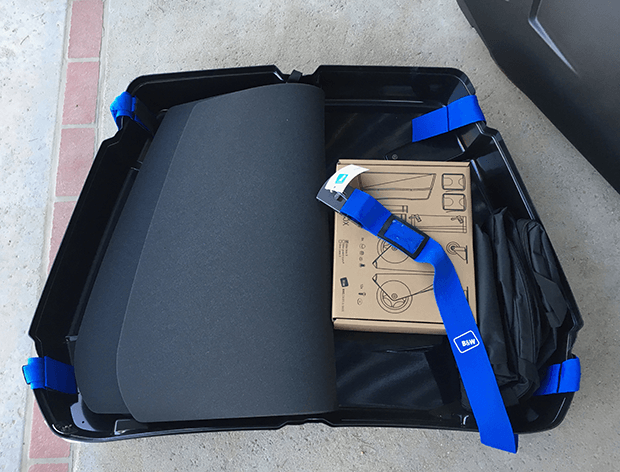
The Bike Box II is called a “box” instead of a “case” because, I guess, it’s less substantial than their cases. But there’s nothing insubstantial about it. It’s a rugged, hard shell case. But it is unique, I’ll say that. It’s got 2 robust wheels on the back and 2 steering wheels on castors in the front (or the other way around, the castors in the back, which is my preference). The case is made of a pair of disconnected halves. It only becomes an actual case when assembled. Of course you could say that about, say, a Tri-All-3, but that case (a fave of mine) has a separate top and bottom. This case has a left and right.
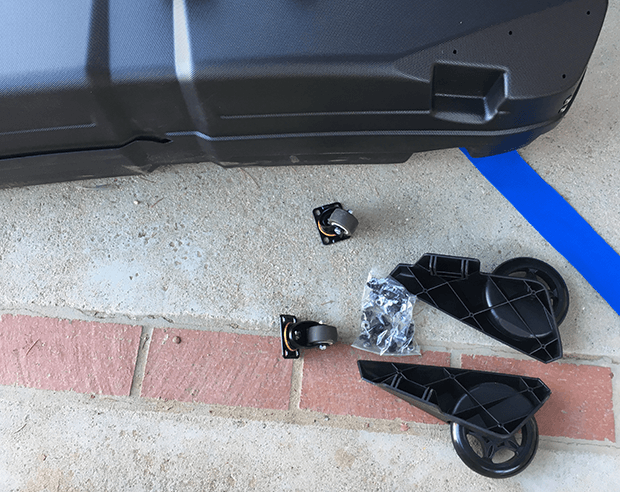
The wheels need to be assembled on the case, if you were to buy it unassembled via mail order. The whole assembly process took me about 20 or 30 minutes. Here are the parts and the tools I used, though an electric tool is unnecessary.
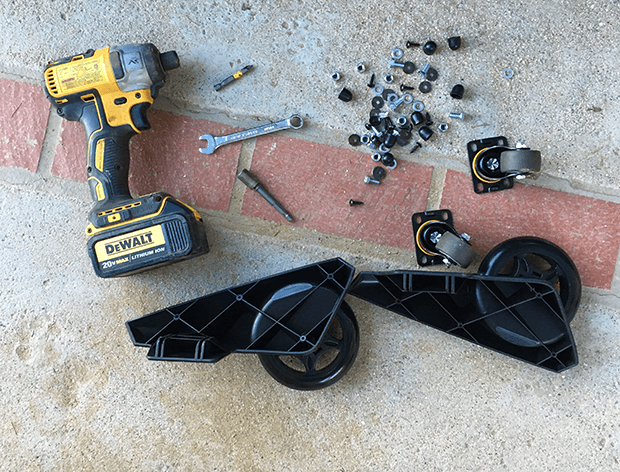
The case comes with a bunch of protective aids which I believe (if I recall correctly) I’ve seen on Canyon’s bikes when they arrive in boxes. These are handy foam blocks with Velcro-like closures that will protect the tubes from contact.
This case also comes with a pair of wheel bags. I have a lot of wheel bags and thankfully these bags are made slightly larger than my others, so that they nicely accept a 700c wheels with inflated gravel tires! There are also 3 foam pieces, layers, like lasagna layers, and you put the “filling” in between the layers. Finally, ther’es a hard, like a Styrofoam, block inside of which sits your big chain ring. You’ll see this in the image below.
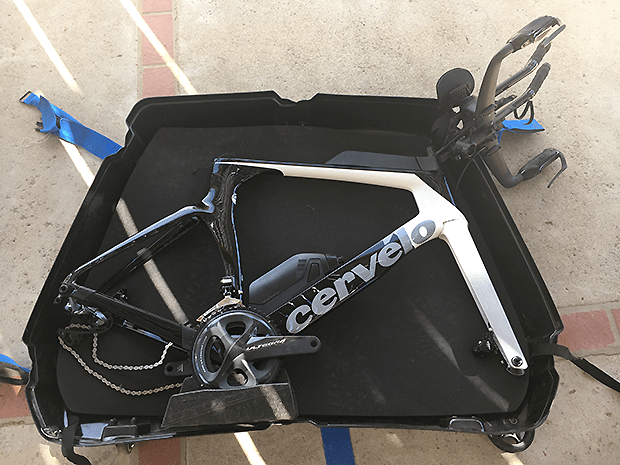
I hope you don’t mind if I share a few tips on how I pack bikes as I discuss packing this P-Series in this case. We’ve always had to use devices to keep the airlines (or Fedex or UPS) from smashing our fork ends or dropouts in compression. The P-Series is a thru axle bike, and I cut a couple of pieces to length out of a piece of 3/8” aluminum conduit, and when I take the wheels off I put the thru axles back into the frame and fork, thru the conduit. That protects the frame and it keeps my thru axles from getting lost.
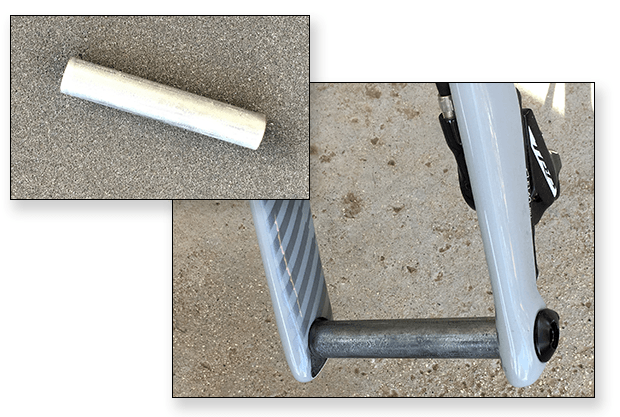
I always take the RD off the bike when shipping. You can tape the RD to the frame if you want or wrap it in bubble wrap but, screw it, I’m lazy, I just leave it sitting there inside the rear triangle. I take it off because this is the most likely bad thing to happen in shipping: a bent derailleur hanger or dropout. Taking the RD off (5mm Allen Wrench in most cases) inoculates your bike against this problem.
I promise you, your new disc brake bike came assembled to the dealer with a couple of shims inside the calipers. Ask your LBS to give you those, and shove them back inside the calipers when you travel. Otherwise you may find your calipers sort of closed up upon reassembly.
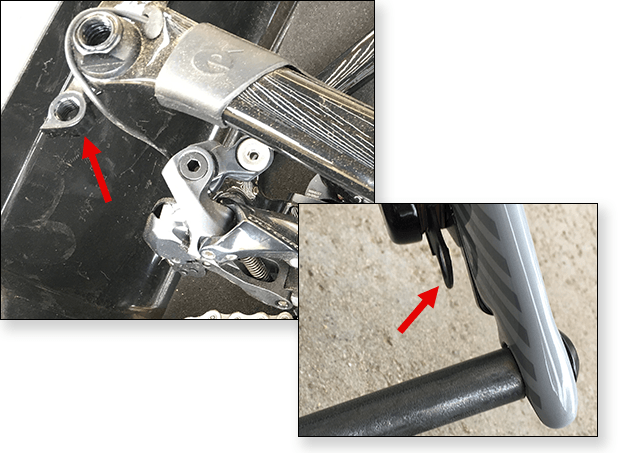
You may find that it’s inconvenient, when you take the stem out of the steerer, to put the top cap back on the fork and have that fork flopping all around inside the frame. I know I do. It offends some sense of appropriateness in me. So, I travel with a pair of 20mm headset spacers, and when I take the stem of the fork I put those spacers in. Stems are almost always about 40mm in height as they pass over the steerer, so any combo of 40mm of headset spacers does the trick.
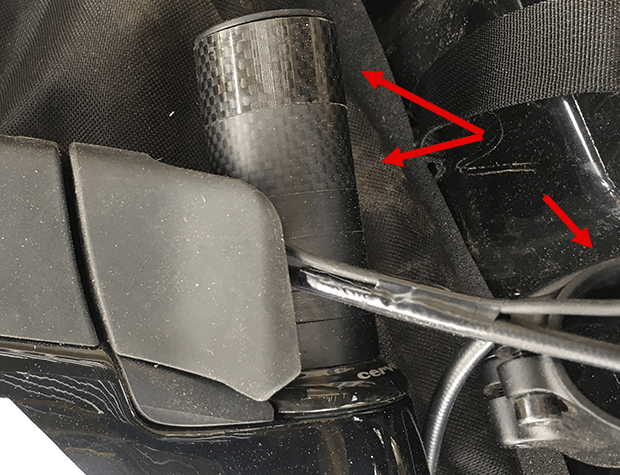
Speaking of discs, you may want to remove the your rotor from the wheel. This is why Shimano’s Centerlock standard is so much better than 6-bolt. I wrote about that here, so, read there if you want a little more info on that.
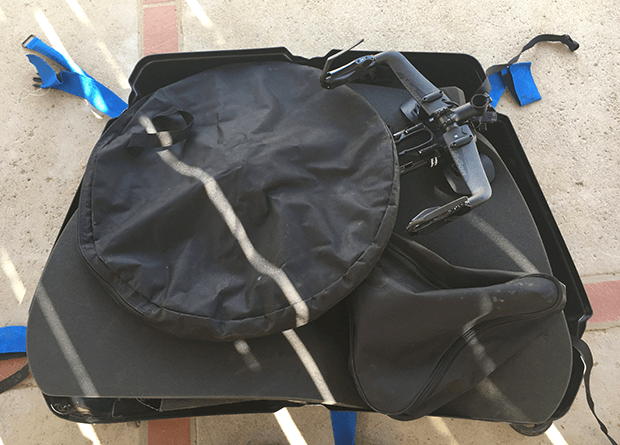
There’s one layer of foam on the outside, against the shell. Then I put in a wheel and then the frame and a second layer of foam. I also put my handlebars – I didn’t need to disassemble any wires or cables when shipping this bike – on this “layer.” Then the other wheels and here’s a bag (not included) inside of which I put the seat post/saddle, and the front hydration bottle, and my pedals. Then the last layer of foam and I’m done. Ready to close it up.
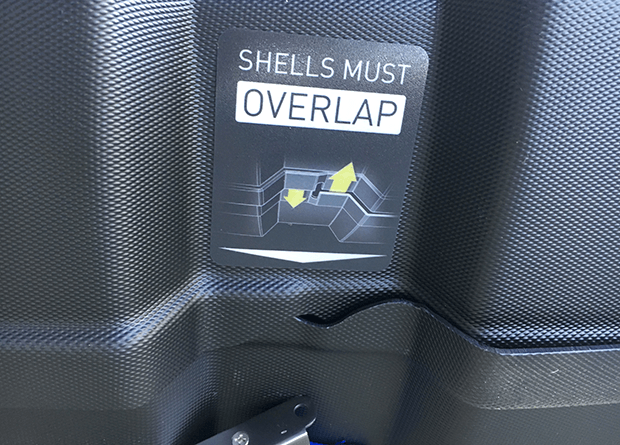
Now for the genius of this case, and why it can be so strong while remaining so light. You might think that you simply place one side over the other. No. The two sides overlap several times. It’s very clear where they do overlap.
There is a guide, on each shell, where it’s clear that one shell slides inside the other. That’ll get you started. From then on it’s pretty straightforward.
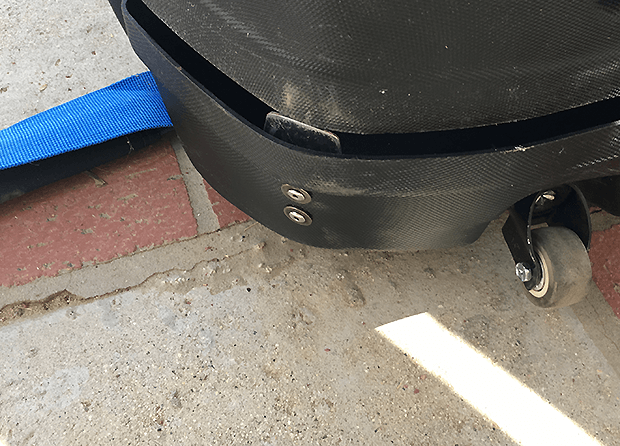
It took me one bike packing exercise to figure it all out. Now, when I use this case, I lay one shell flat on the ground, and it’s the shell with all the straps attached. Strap are laid out, extended out, like your snow angel arms. Once the bike is packet, the other shell goes atop, and the top shell slotting into the bottom shell’s guide.
Once the top shell is on, appropriately overlapped at every interval, the straps from the bottom shell are affixed (with Velcro). Then it’s pretty much ready to roll and I place the Bike Box II upright on its wheels.
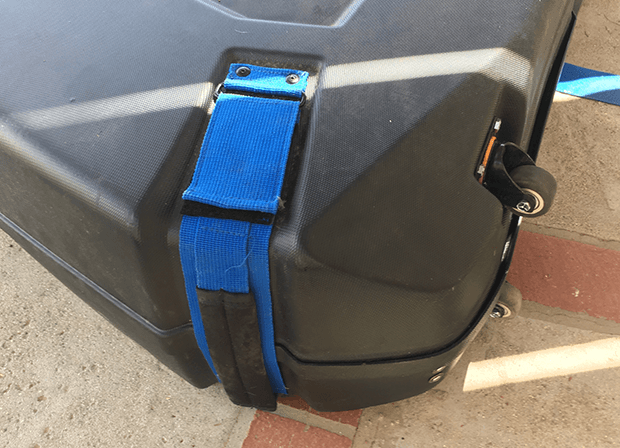
Once the top shell is on, appropriately overlapped at every interval, the straps from the bottom shell are affixed (with Velcro). Then it’s pretty much ready to roll and I place the Bike Box II upright on its wheels.
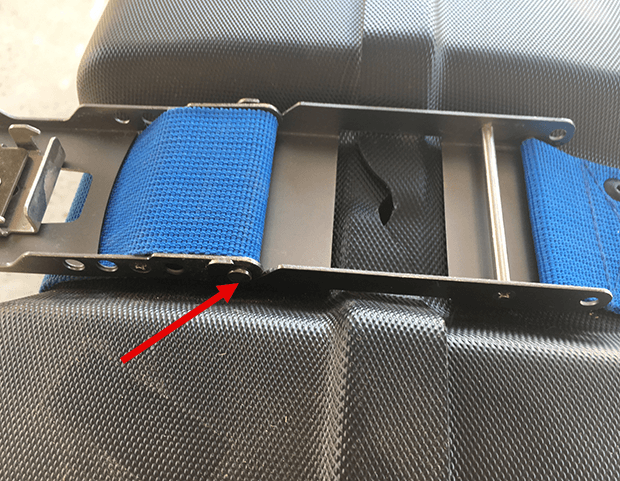
The last thing to do is close up a big strap that spans the entire case. There’s a pin, around which the clasp pivots, that you must insert into a receiver with which it mates. Then you flip the clasp over, it locks, you’re done.
If you find the clasp not sufficiently tight, there’s a pin on the clasp that you can remove with a Phillips screw driver, and the placement of that pin in 1 of 4 holes makes strap yet tighter, if need be (I didn’t need to adjust it).
Now, let’s talk about size and weight. My first use of this case was last month. I and the wife flew to Rome, gravel bikes inside, rolled our cases to the train station, took a couple of train rides to Florence, threw the cases into the back of a taxi, drove to the airport to pick up a rental car. Now came the moment of truth. The car was a Fiat Tipo. Go ahead, click that link, look at that car and tell me if it inspires you with confidence, if you’re traveling with a pair of bike cases.
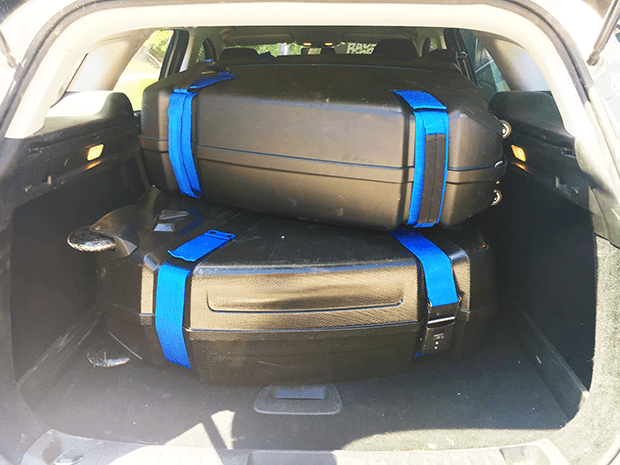
As you see the cases slid right in (one was this Bike Box II, the other a B&W Bike Guard Curv). This case barely cracks 90” inches when you measure length + height + width, and the airlines variously require a case not to exceed either 115” or 126” or thereabouts using this measuring system.
Second, this Cervelo P-Series, when loaded – and this was no small bike, it was a size L, or size 58cm – weighed 47.6lb. I had room for, and could’ve placed in there, my helmet and shoes. For this Italy trip I had all of that plus my floor pump and it came in at exactly 50lb. That’s the magic number.
It isn’t that the airlines will fly your bike as checked luggage. It’s that it’ll fly as checked luggage if it doesn’t exceed 50lb. This is the tricky part. You may get an extra 20lb if you’re flying in a forward cabin. Or not. If you’re flying coach on an airline that grants you this new same-as-checked-bag benefit, 50lb is the max. This is where the weight of the case becomes paramount.
The cases were extracted from the back of the Fiat Tipo in the Strada Bianche region of Chiante, and rolled over cobbles and gravel. Back into the car and to a Schwable tire launch in another part of Florence. They were packed in and out of the cases several times. Then, finally – long story of bad navigational principles – they were muscled over 4 bridges spanning Venice canals, placed on a bus, then the airlines lost both cases for 3 days before they were finally delivered home, cases intact, bikes fine.
A couple of notes. First, the case B&W most sells to triathletes is the Bike Guard Curv, the other case we took to Tuscany. It sells for about $800. Great case. I’m just struggling to find the extra $500 in value over the case reviewed here. Frugal by nature, I just… can't… find a good reason to spend more than the $200-and-something this case costs.
Second note: The overlapping of the shells might be a bridge too far for TSA. Mind, I didn’t even think about this on last month’s trip and the Bike Box II was disassembled, checked, and reassembled (properly) by TSA. However, you may want to ask TSA to check it in your presence at the point of departure. (I do this with every bike case, though I forgot to do this on this recent trip and all went okay anyway.)
And finally, if you look at the bottom of our pages you’ll see B&W is a Slowtwitch Partner. I first saw the bike cases made by B&W at Interbike last year (which was the last year of Interbike). I admired the cases, spent a lot of time in this company’s trade show booth, but I argued against any sort of partnership with Slowtwitch because I just didn’t intend to write anything about these cases editorially. We just left it there.
What changed? I sent an email back the day after I read about American Airlines’ change of posture on checked bikes. (Airlines don’t generally announce they’re making travel better, cheaper, more comfortable for us.) “Now I have a narrative,” I wrote, “and I expect to be writing a lot about travel.” They recommended I try their cases and they sent some out. I asked for the lesser expensive cases not because of the price, but because their light weight works in conjunction with these new bike rules.
This is the first of a number of bike case reviews forthcoming, including the Trico Ironcase, Tri-All-3, and others. Here’s B&W International if you want to read more about the case, tho this company has a U.S. office and warehouse, so cases purchased will generally be shipped to you from the continent in which you live.
Note that we have a new “superthread” on the Reader Forum, Ministry of Travel, which will be a curated thread designed to inform and answer any questions you all may have about anything related to travel (you or your bike) that relates to this sport we’re in.


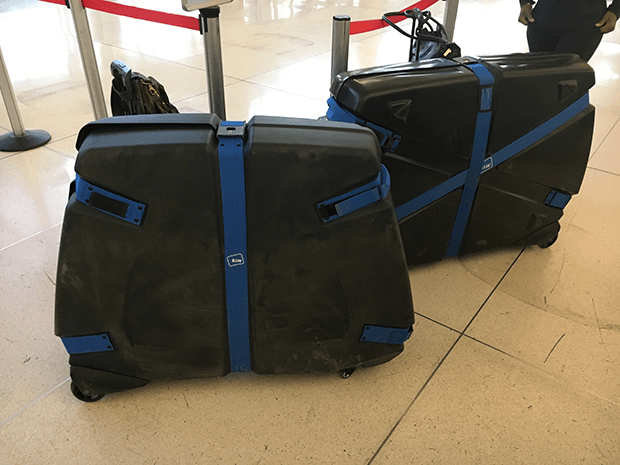
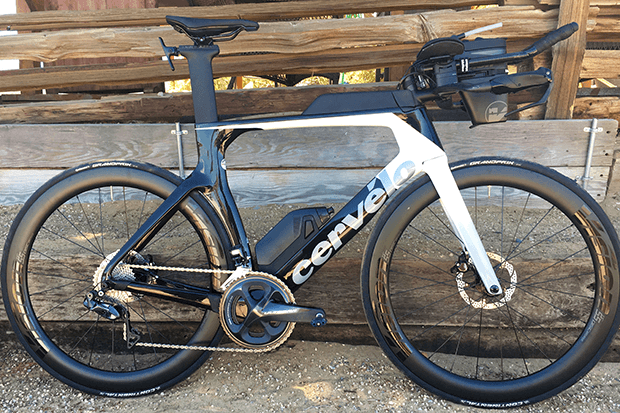
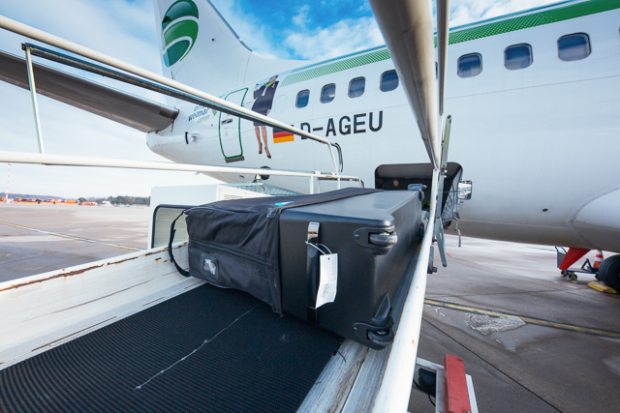
Start the discussion at slowtwitch.northend.network